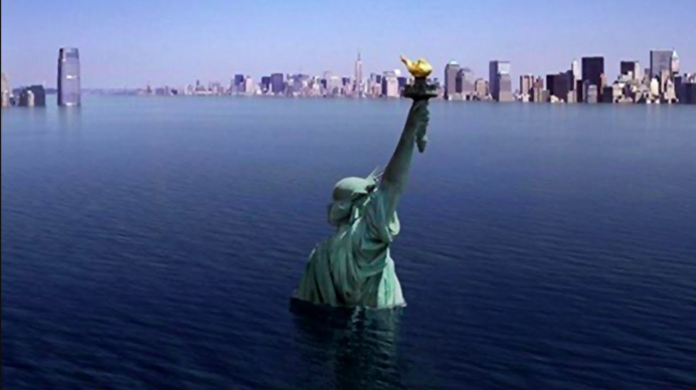This is Scott Amyx with today’s Climate Change Flash Briefing.
Rising sea levels pose serious risk to institutional real estate investment. New York City, San Francisco and other major cities around the world represent a large share of total investment and carry a heavy weight in institutional real estate portfolios. Almost all are major coastal cities with their business districts are close to sea level.
Coastal cities and their real estate markets face considerable risks from rising sea levels. Given significant portfolio allocations to these markets, institutional real estate portfolios have considerable exposure to climate change.
According to a study by Four Twenty Seven, a research firm, looking at the total value of properties in the top 50 metropolitan areas in the National Council of Real Estate Investment Fiduciaries Property Index or NPI, more than 24 percent of the NPI value is in metro areas whose central cities are among the 10 percent of cities most exposed to sea-level rise. This amounts to more $130 billions of real estate. 67 percent of the NPI’s value or $360 billions is in metro areas whose primary cities are among the 20 percent most exposed in the U.S.
On a global scale, institutional investors such as pension funds, mutual funds and insurance companies currently invests a combined $2.53 trillion in real estate. According to industry tracker Preqin, 499 institutional investors have $1 billion-plus commitments in real estate.
But what happens as climate change destroys trillions of dollars in real estate and coastal cities? Who will lose out? All of us. It’s our retirement savings and investments that are managed by pensions funds, insurance and investment companies. We have the most to lose.
Stay tuned next time to find out the results from a recent poll on Americans’ perception of the seriousness of climate change.


















